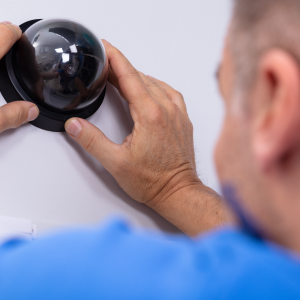- Licensing Training
- Earn CEUS
- Career Programs
- Certifications
- Security Certifications
- Certified Alarm Technician (CAT) Level 1
- Certified Video Systems Specialist (CVSS)
- Certified Video Technician (CVT)
- Certified Systems Integrator (CSI)
- Certified Alarm Technician (CAT) Level 2
- Certified Intrusion Technician (CIT) Level 2
- Certified Service Technician (CST)
- Certified Security Systems Integrator (CSSI)
- Fire Certifications
- Sales Certifications
- Renew Your Certification
- Security Certifications
- About
- Contact Us
- Alabama
- Alaska
- Arizona
- Arkansas
- California
- Colorado
- Connecticut
- Delaware
- Florida
- Georgia
- Hawaii
- Idaho
- Illinois
- Indiana
- Iowa
- Kansas
- Kentucky
- Louisiana
- Maine
- Maryland
- Massachusetts
- Michigan
- Minnesota
- Mississippi
- Missouri
- Montana
- Nebraska
- Nevada
- New Hampshire
- New Jersey
- New Mexico
- New York
- North Carolina
- North Dakota
- Ohio
- Oklahoma
- Oregon
- Pennsylvania
- Rhode Island
- South Carolina
- South Dakota
- Tennessee
- Texas
- Utah
- Vermont
- Virginia
- Washington
- West Virginia
- Wisconsin
- Wyoming
- Licensing Training
- Earn CEUS
- Career Programs
- Certifications
- Security Certifications
- Certified Alarm Technician (CAT) Level 1
- Certified Video Systems Specialist (CVSS)
- Certified Video Technician (CVT)
- Certified Systems Integrator (CSI)
- Certified Alarm Technician (CAT) Level 2
- Certified Intrusion Technician (CIT) Level 2
- Certified Service Technician (CST)
- Certified Security Systems Integrator (CSSI)
- Fire Certifications
- Sales Certifications
- Renew Your Certification
- Security Certifications
- About
- Contact Us
- Core Courses
- Printed Course Material Add-Ons
- Assessments
- Class Templates
- Group Products
- Uncategorized
- Continuing Education Courses
- ESA Fire Certifications
- ESA Security Certifications
- Certified Alarm Technician - Level I
- Certified Alarm Technician (CAT) Level II
- Certified Intrusion Technician (CIT) Level II
- Certified Security Systems Integrator (CSSI)
- Certified Service Technician (CST)
- Certified Systems Integrator (CSI)
- Certified Video Systems Specialist (CVSS)
- Certified Video Technician (CVT)
- ESA Sales Certifications
- States
- Alabama
- Alaska
- Arizona
- Arkansas
- California
- Colorado
- Connecticut
- Delaware
- Florida
- Georgia - Cobb County
- Hawaii
- Idaho
- Illinois
- Indiana
- Iowa
- Kansas - City of Wichita/Sedgwick County
- Kentucky - Louisville
- Louisiana
- Maine
- Maryland
- Massachusetts
- Michigan
- Minnesota
- Mississippi
- Missouri - St. Louis County
- Montana
- Nebraska
- Nevada
- New Hampshire
- New Jersey
- New Mexico
- New York
- North Carolina
- North Dakota
- Ohio
- Oklahoma
- Oregon
- Pennsylvania
- Rhode Island
- South Carolina
- South Dakota
- Tennessee
- Texas
- Utah
- Vermont
- Virginia
- West Virginia
- Wisconsin
- Wyoming
- Washington
- Course Format
Basic Circuit Troubleshooting and Testing
$70.00

This course provides students an overview of how to fix what is found inside a faulty panel. Review the types of circuits and the common causes of circuit faults, and take an in-depth look at how to locate the sources of circuit faults.
After completing this course you will be able to:
- Describe the different types of circuits
- Explain the characteristics of a circuit in a normal state
- Describe the common causes of circuit faults
- Describe how to determine a circuit fault
- Identify the process of locating the source of a circuit fault
Topics Explored
Circuit Types
- Contacts – Normally Opened and Normally Closed
- Classes of Circuits
- Detector Compatibility
- Addressable Circuits
Circuit Faults
- Importance of Visual Inspection
- Circuit Characteristics
- Circuit Check – Determining if a circuit is normal
Circuit Faults: Open
- What is an open circuit?
- When does the panel indicate an open zone?
- Open zone causes
- What happens when circuit is open
- Determining if circuit is open
- Correcting the problem
- Troubleshooting steps
Circuit Faults: Short
- Causes of shorted circuit
- What happens when circuit is shorted?
- Determining if a circuit is shorted
- Causes of ground faults
- Determining if a circuit has a ground fault
Circuit Faults: Foreign Potential
- Definition of foreign potential
- Definition of AC induction
- Determining if a circuit has AC induction
- Tips to avoid AC induction
- Definition of foreign DC potential
- Determining if a circuit has foreign DC potential
- Definition of EMI RFI
- Examples of RFI interference
- Determining if a circuit has RFI
Circuit Faults: High Low Resistance
- Determining if a circuit has a high resistance
- What causes high resistance on a circuit
- Cold solder joints
- Appropriately sizing wiring
Ethernet Circuits
- What is a network?
- Troubleshooting an Ethernet connection
- Wiring scheme
- Troubleshooting Ethernet circuits
- Troubleshooting Ethernet cable
- The ten commandments of wiring
What to expect in this course: The presentation includes text, audio, graphics, videos and activities to help you absorb the information presented. This course has a short quiz at the end, which you will be required to pass with a 70% or greater to complete the course.
State Approvals/Recognition
State approvals, include:
AK-CBPL, Sponsor No 16207
AL-Alabama Electronic Security Board of Licensure (AESBL)
CA-Approved through WBFAA. Must submit through WBFAA, conversion fees apply.
LA-Louisiana Office of the State Fire Marshal: Life Safety & Property Protection Advisory Board (LSPPA)
Louisville, KY-Louisville Metro Police Department (LMPD)
MS-Mississippi Office of the State Fire Marshal: Electronic Protection Systems Division
NC-North Carolina Department of Public Safety: Alarm Systems Licensing Board (NC DPS-ASLB)
NJ-State of New Jersey: Division of Consumer Affairs
TX-Texas Department of Public Safety: Private Security Bureau (TX DPS-PSB)
TN-Tennessee Department of Commerce and Insurance: Alarm Systems Contractors Board
WA-State Department of Labor & Industries – Electrical Board
Online Courses:
If the student has completed less than ¼ of the course and a request is made to cancel, a refund is available less a 25% administrative fee. Students may choose to transfer their funds to another ESA/NTS provided course if less than ¼ the course has been completed. Transfers will not be issued until the class materials, including the course manual, is returned in like new condition to ESA/NTS. Fund transfers cannot be made to non-ESA/NTS courses due to the varied payment terms established by the Training Providers. Cancellation requests made beyond one-quarter through the course will not be refunded or transferred. Refunds should be expected within thirty days of receipt of returned materials.Live In-Person and Virtual Courses
Provider Cancellation Policy: Training Providers may cancel a class with at least 5 calendar days’ notice to pre-registered students. Classes may be cancelled without advance notice due to weather conditions or other unforeseeable emergencies. The Training Coordinator determines the conditions that constitute an emergency. All monies paid to the Training Provider for a class that is cancelled shall be fully refunded within 14 business days of the cancellation notice. Students may choose to have their monies credited towards another scheduled class. Students should contact the Training Provider for additional terms and conditions regarding their refund policy. Student Cancellation Policy: If a student cancels an ESA National Training School course more than seven days prior to the class, a refund, less a 25% administrative fee, will be issued. In lieu of canceling, a student can opt to transfer their funds to a future course. There are no refunds or transfers permitted within seven days before the class.$196.00





